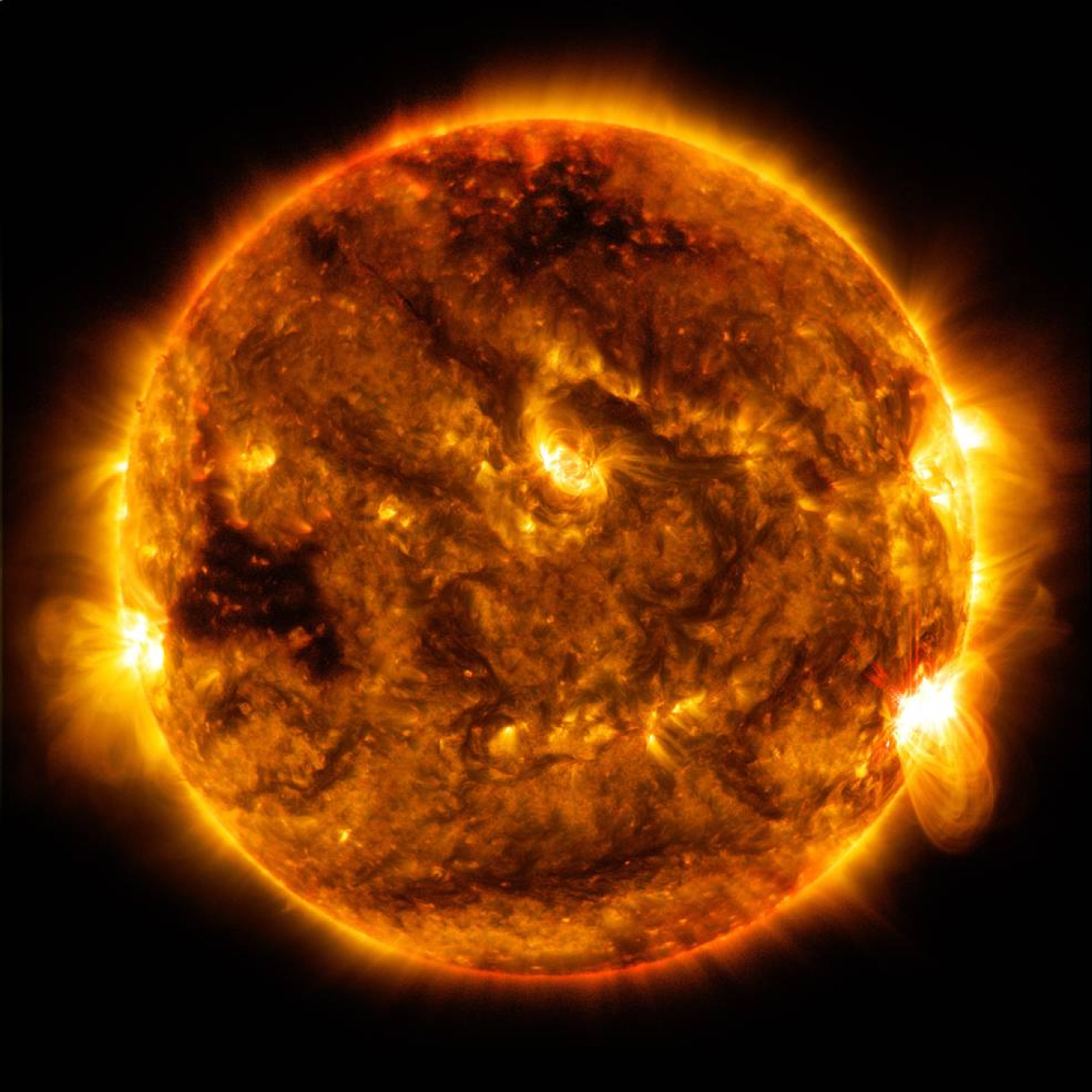
Sustained, ongoing fusion like that in our Sun relies on burning plasmas. Plasma, one of the four fundamental states of matter, consists of a gas of ions and free electrons. A burning plasma is one in which most of the plasma heating comes from fusion involving thermal plasma ions. In the Sun, that fusion involves hydrogen ions. The high temperatures needed to sustain fusion are maintained by the “self-heating” process in which energy from fusion heats the thermal plasma ions via particle collisions. A plasma enters what scientists call the burning plasma regime when the self-heating power exceeds any external heating.
Many new scientific challenges await scientists at the frontiers of burning plasma science including understanding and controlling a strongly coupled, self-organized plasma; management of heat and particles that reach plasma-facing surfaces; demonstration of fuel breeding technology; and the physics of energetic particles. The ITER tokamak will be the first magnetic confinement experiment to explore these burning plasma issues. Fusion scientists and engineers at ITER will investigate the physics, engineering, and technologies associated with self-heating plasma. These issues are all critical to ITER’s broader goal of using self-heating plasma reactions to become the first fusion power plant that produces more power than it consumes, a massive step toward commercial fusion power production.
DOE Office of Science: Contributions to Burning Plasma Science
The Department of Energy provides significant support to research and development relating to burning plasmas. DOE research activities are managed under the Fusion Energy Sciences (FES) program within the DOE Office of Science. The FES program supports the U.S. Burning Plasma Organization (USBPO). The USBPO is a national organization of FES-funded scientists and engineers involved in researching the properties of magnetically confined burning fusion plasmas. DOE also supports construction of the international ITER project through the FES program and the U.S. ITER Project Office. The ITER facility will be capable of accessing the burning plasma regime and aims to produce 500 MW of fusion power for 400 seconds with self-heating power levels that exceed external heating power by a factor of two.
Burning Plasma Facts
- The Sun is a burning plasma that has reached “ignition,” meaning the Sun’s plasma temperature is maintained solely by energy released from fusion. The Sun has been burning hydrogen for 4.5 billion years and is about halfway through its life cycle.
- To reach fusion-relevant temperatures, the ITER tokamak will heat plasmas using three methods. Ohmic heating involves heat generated by resistance to the plasma current, much like how the coils in a toaster heat up. Neutral particle beam injection involves heating the plasma by injecting high-energy particles into the tokamak. High-frequency electromagnetic radiation involves heating the plasma by transferring energy from electromagnetic radiation to particles in the plasma.
Resources and Related Terms
- Fusion Energy Sciences Program
- U.S. Burning Plasma Organization
- U.S. ITER Project Office
- ITER Organization
- Learn about joint DOE-private sector efforts to advance fusion power in these presentations from a June 2022 workshop.

